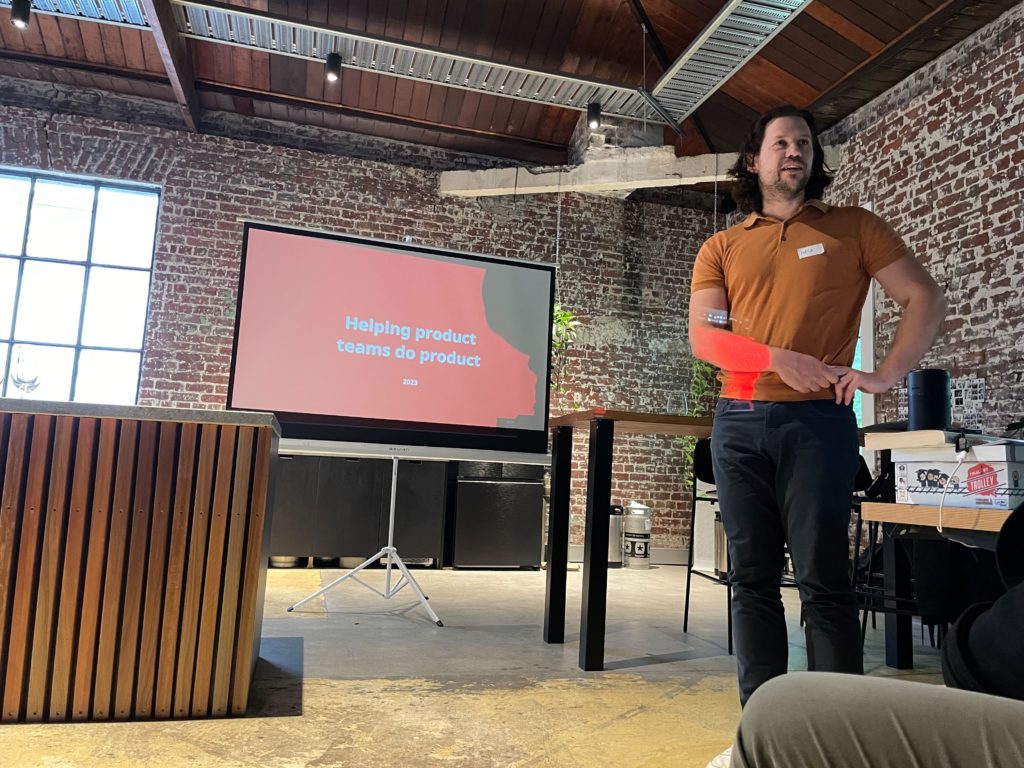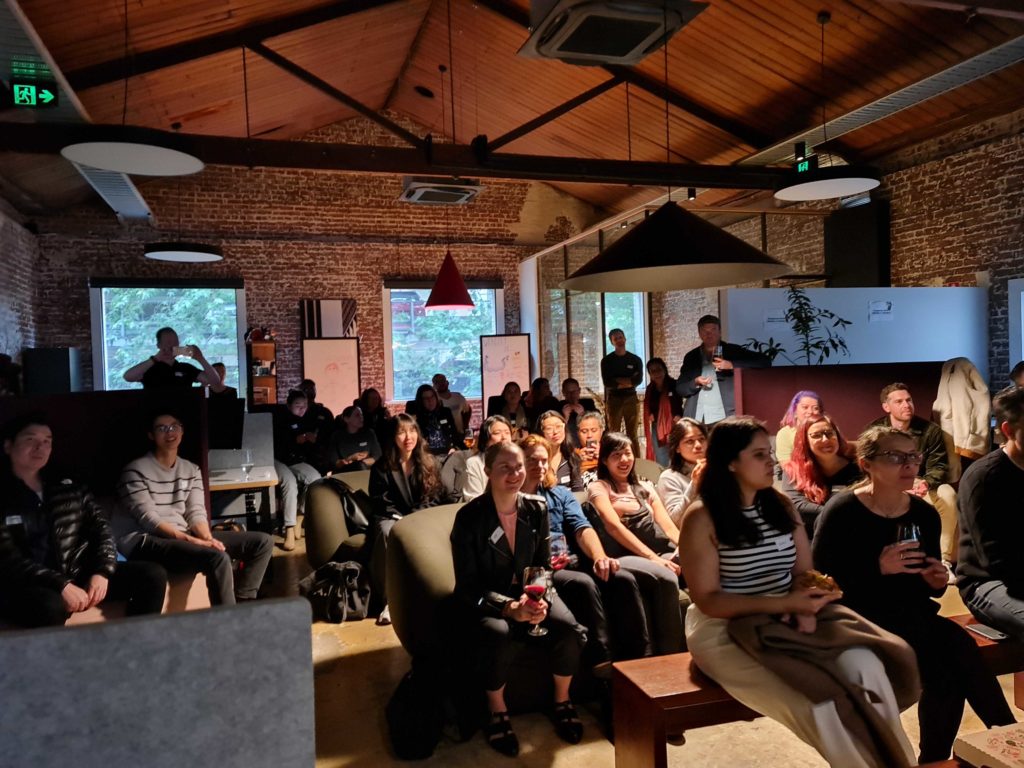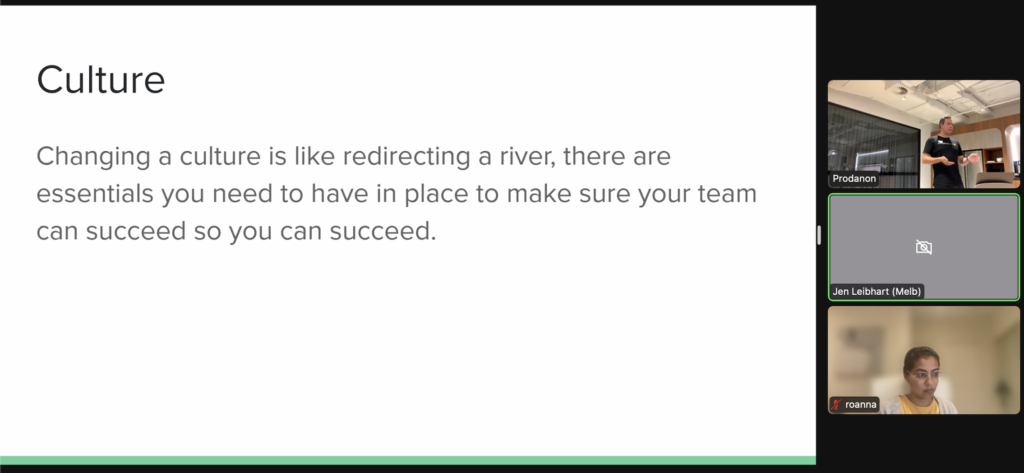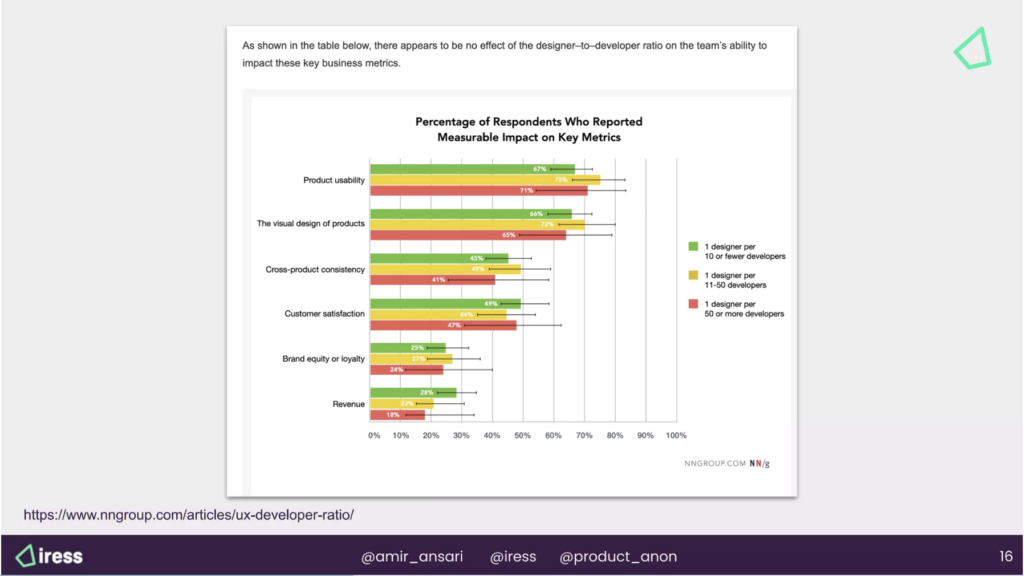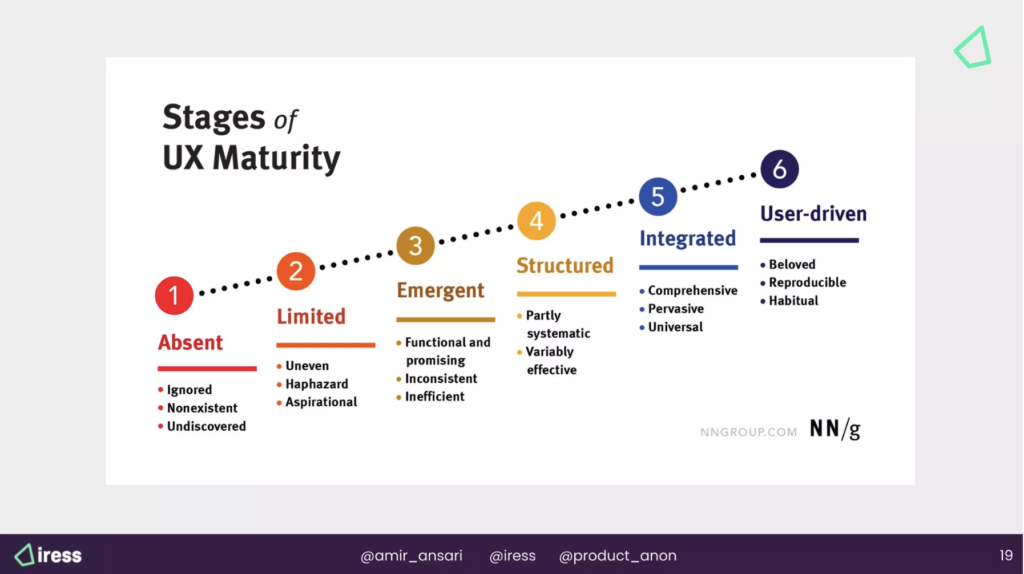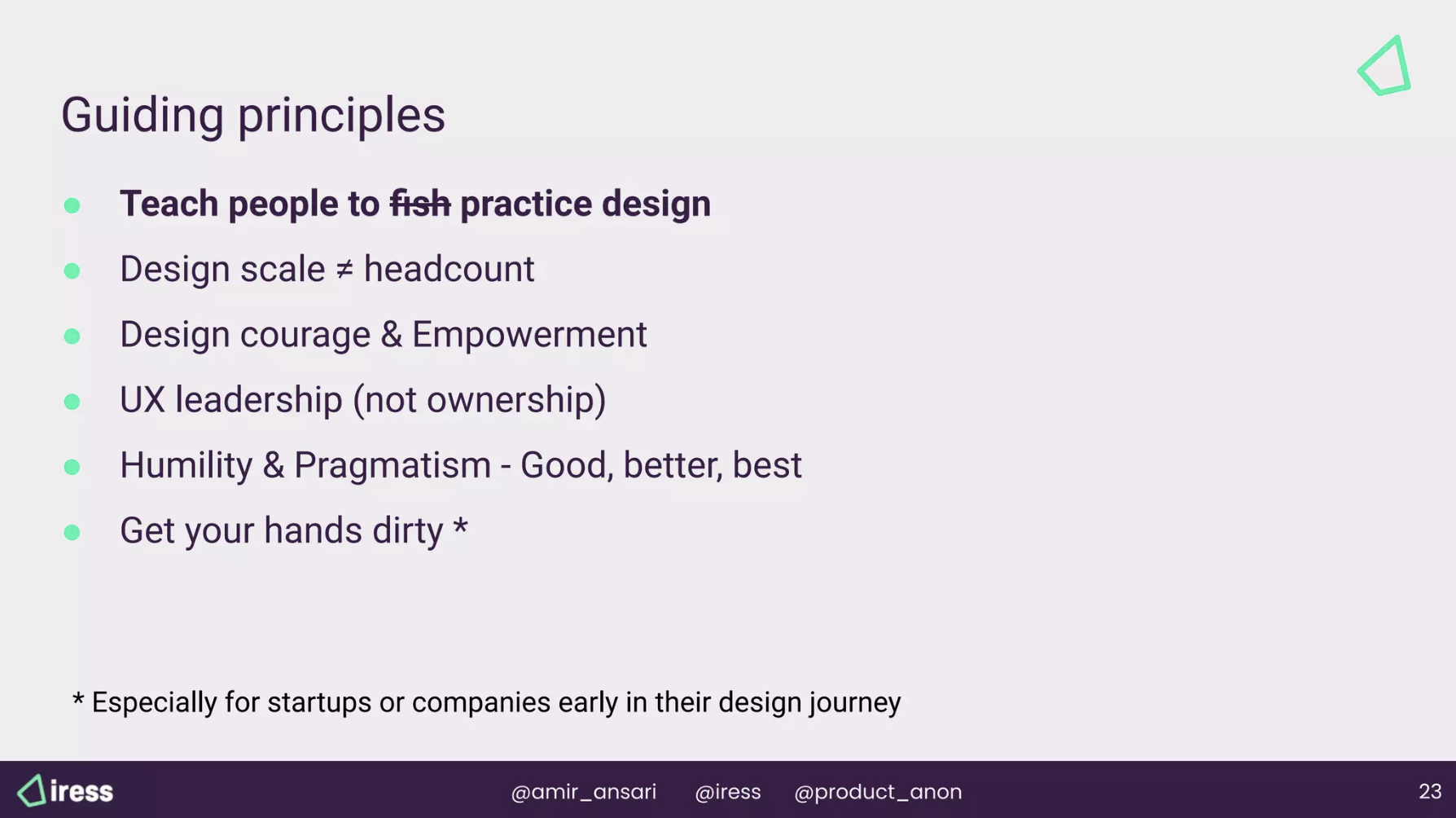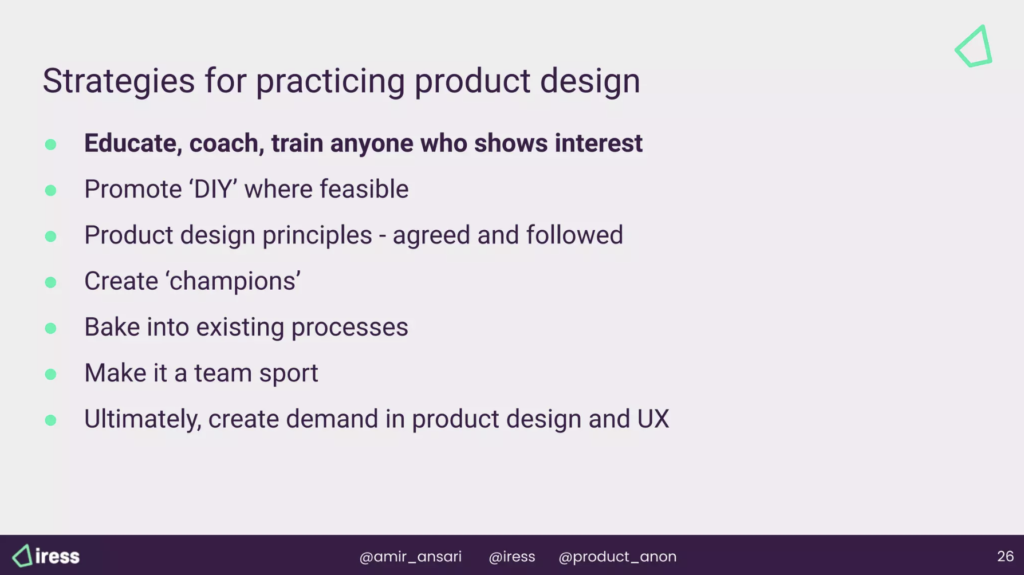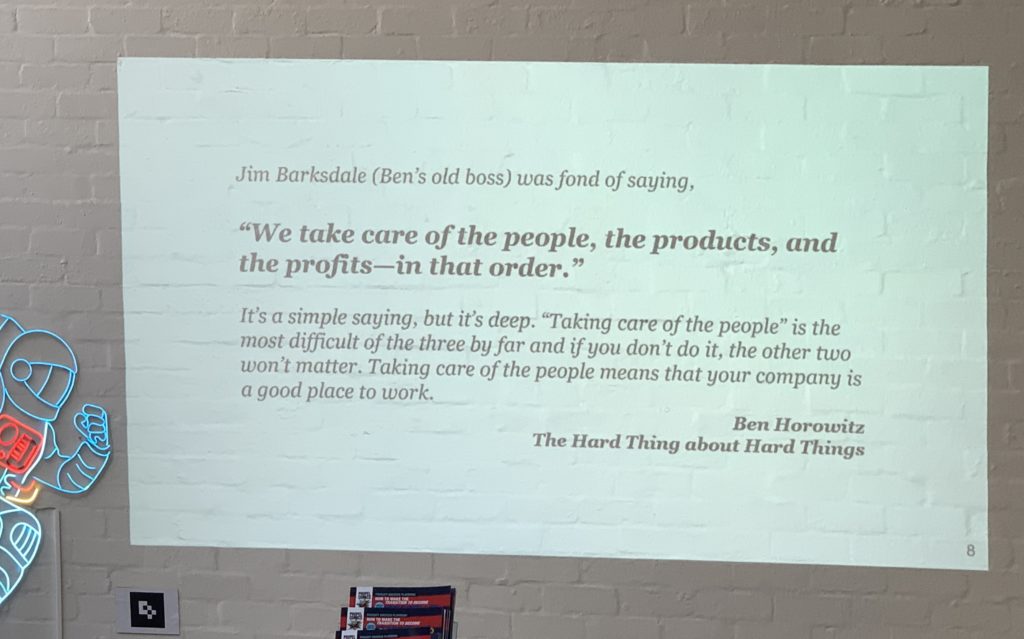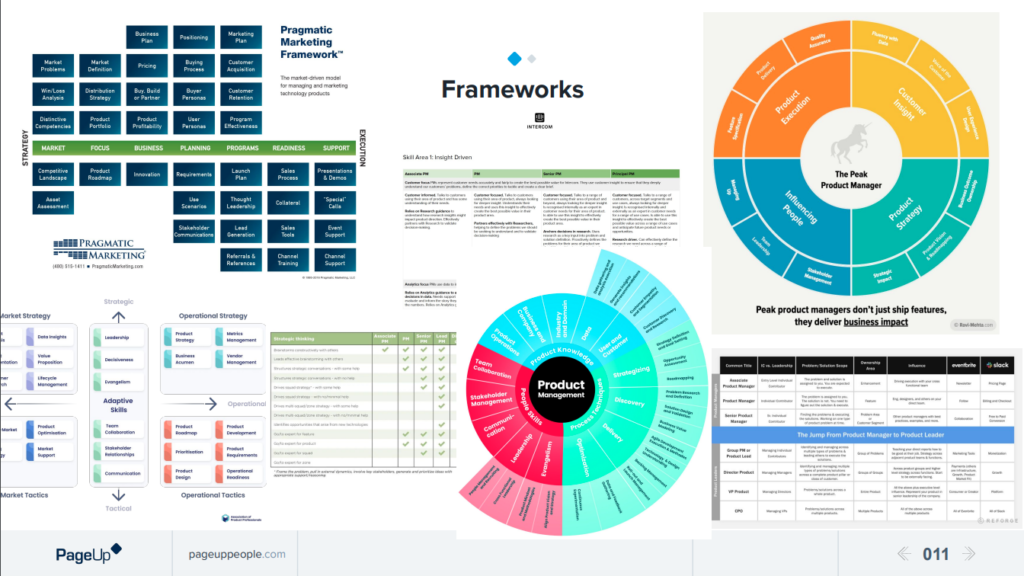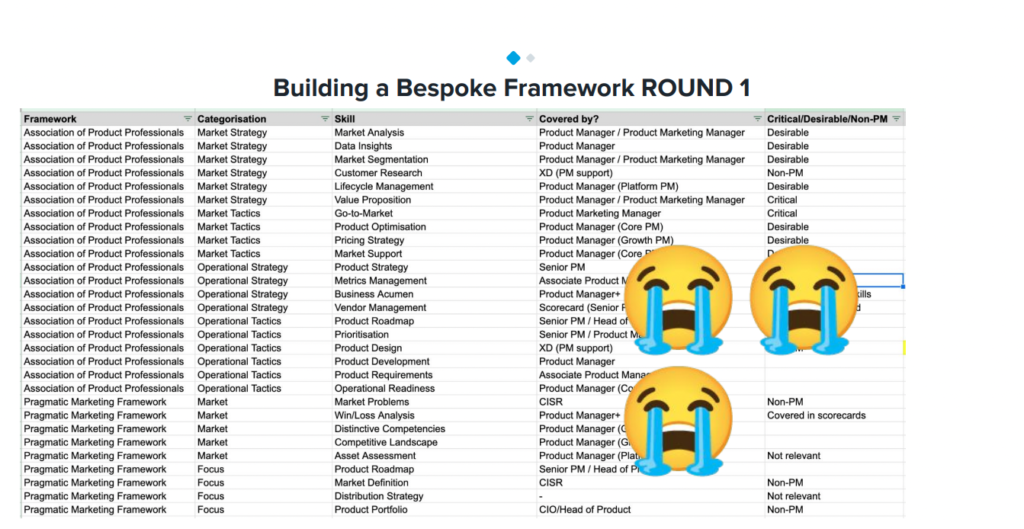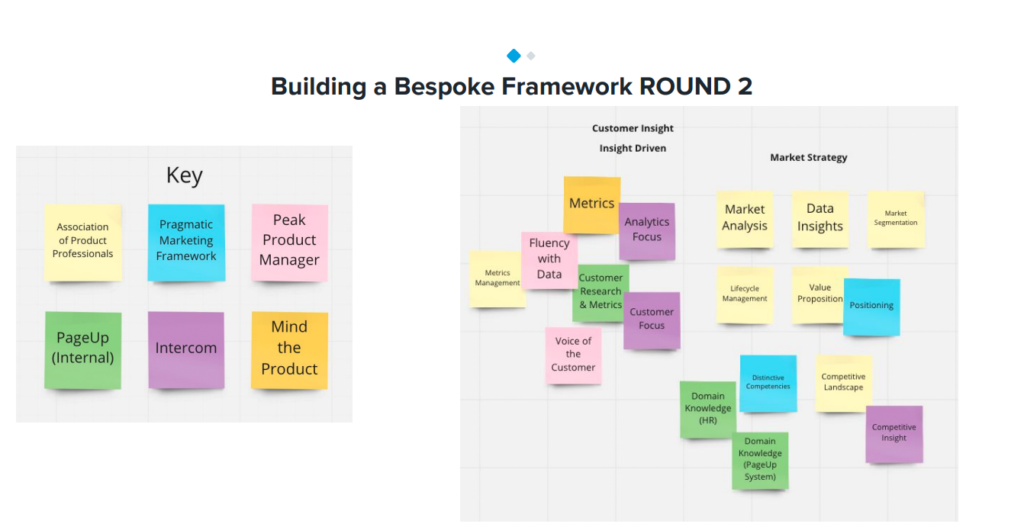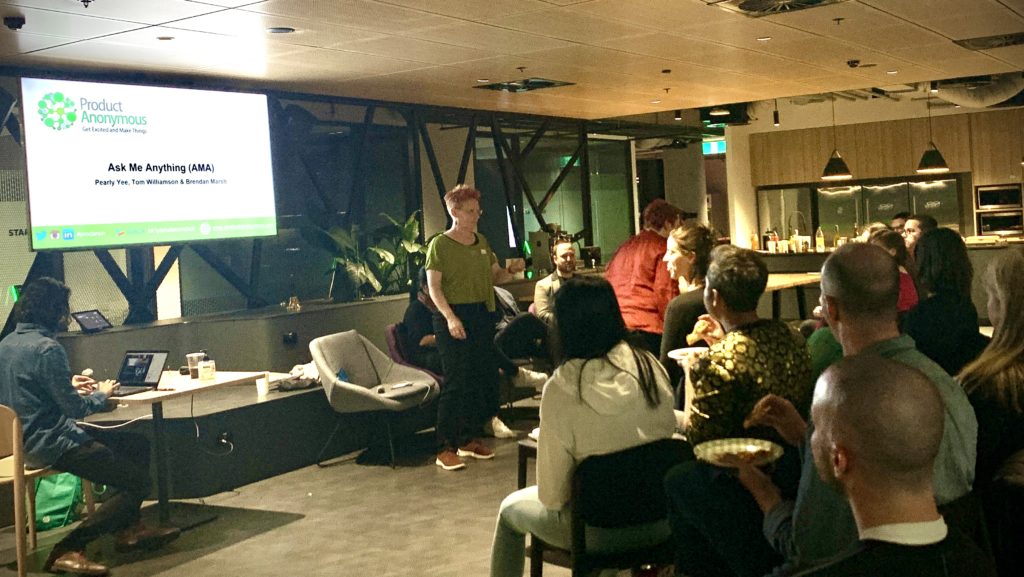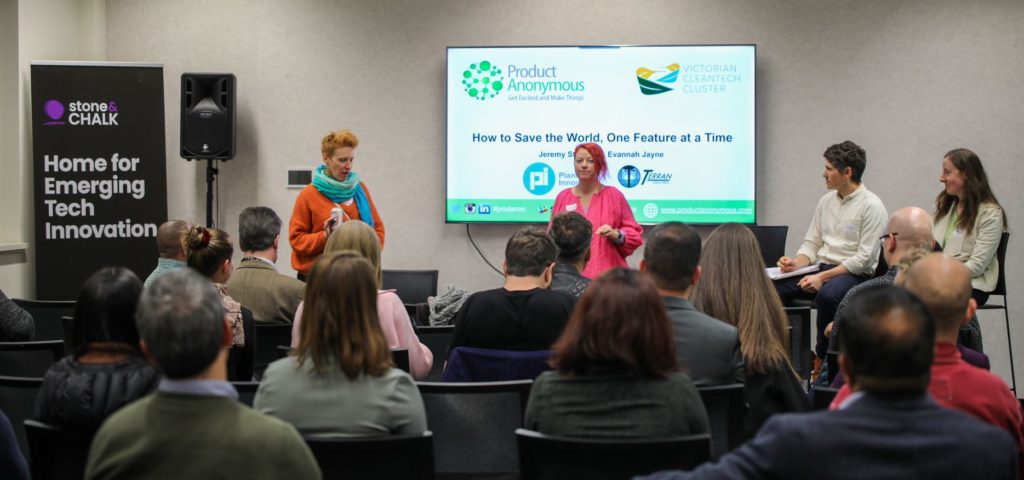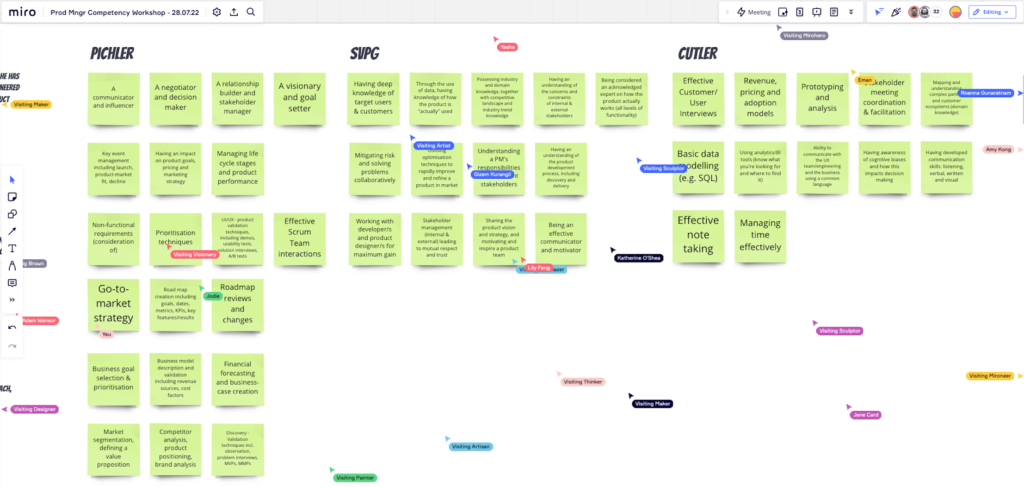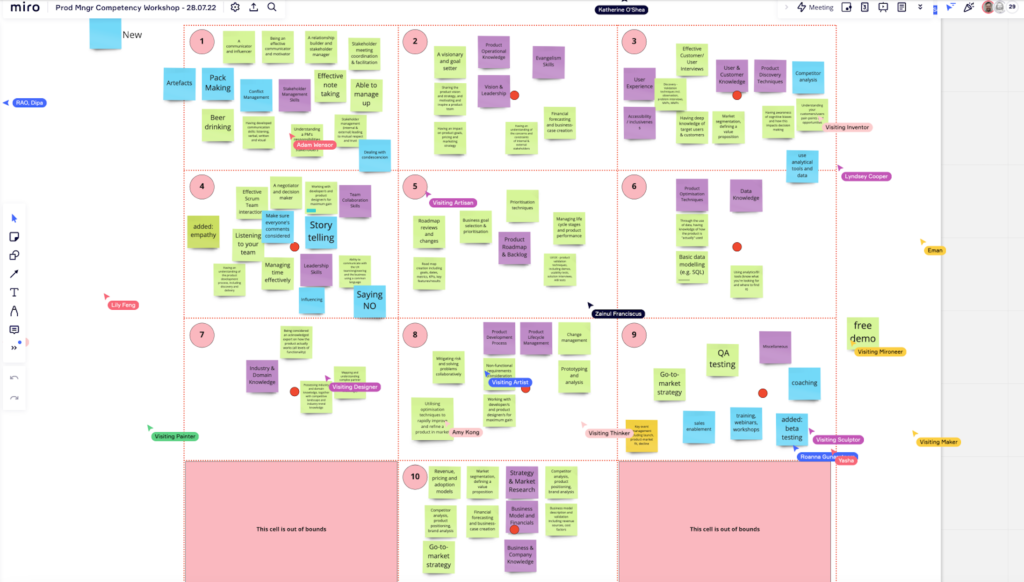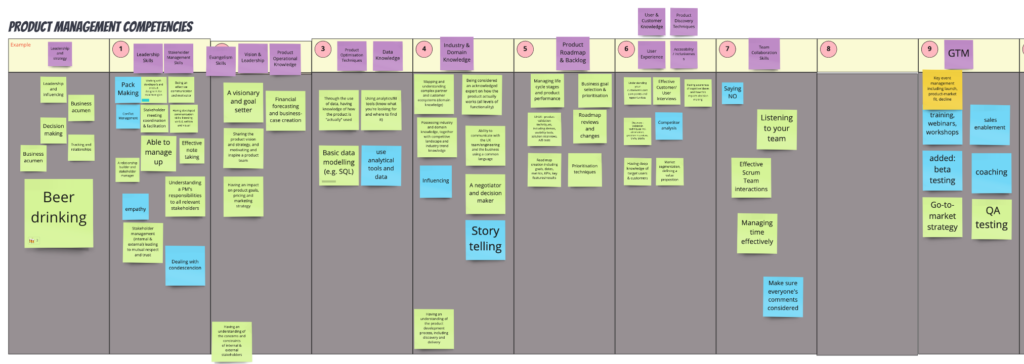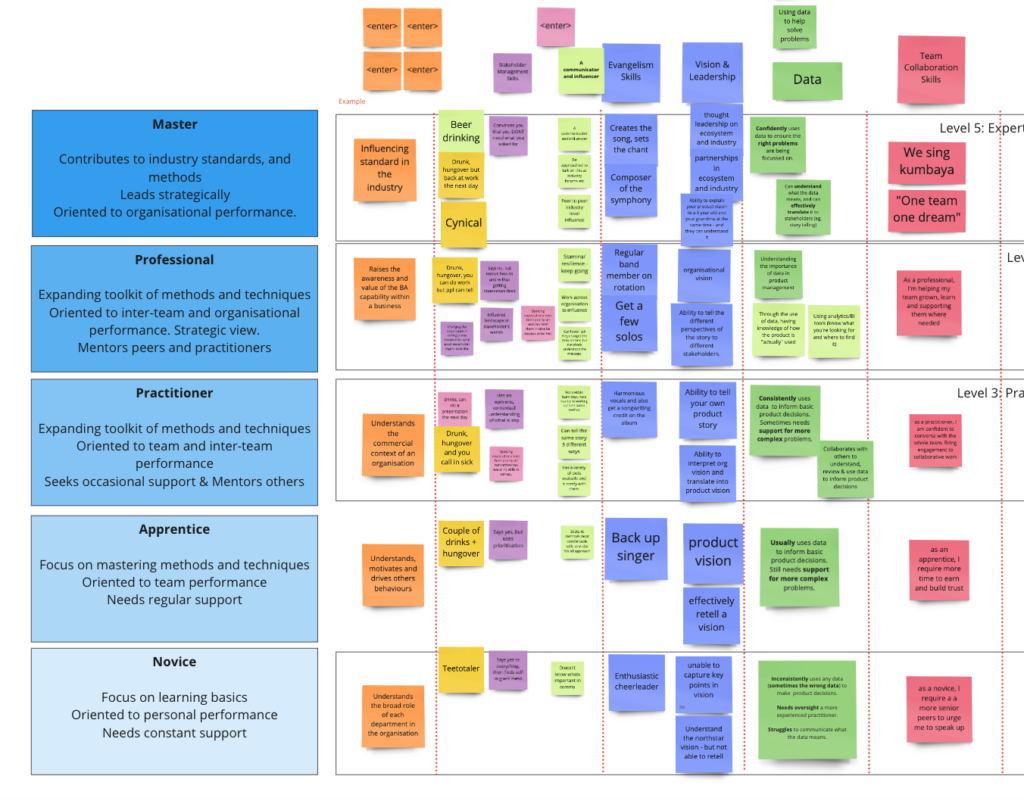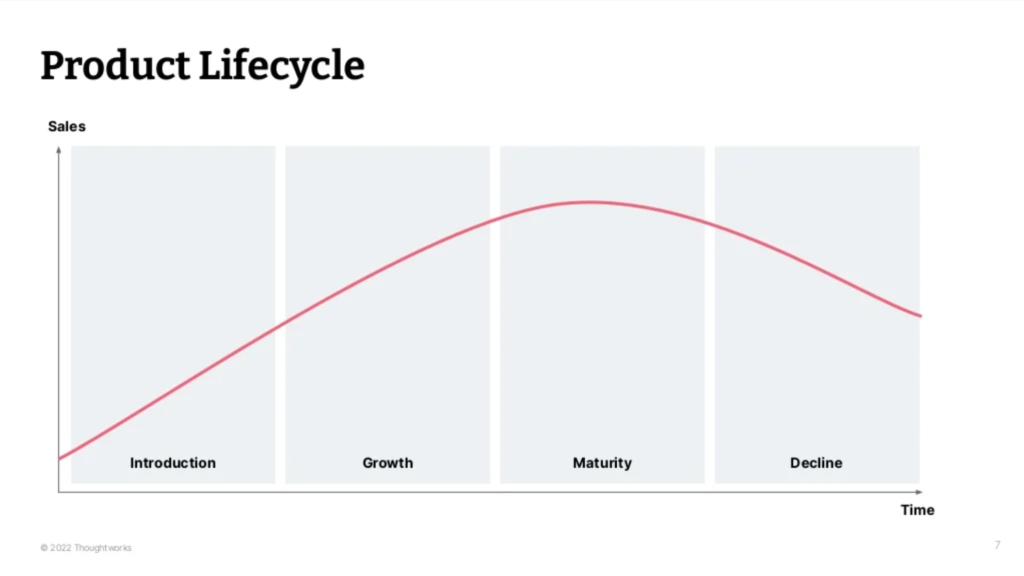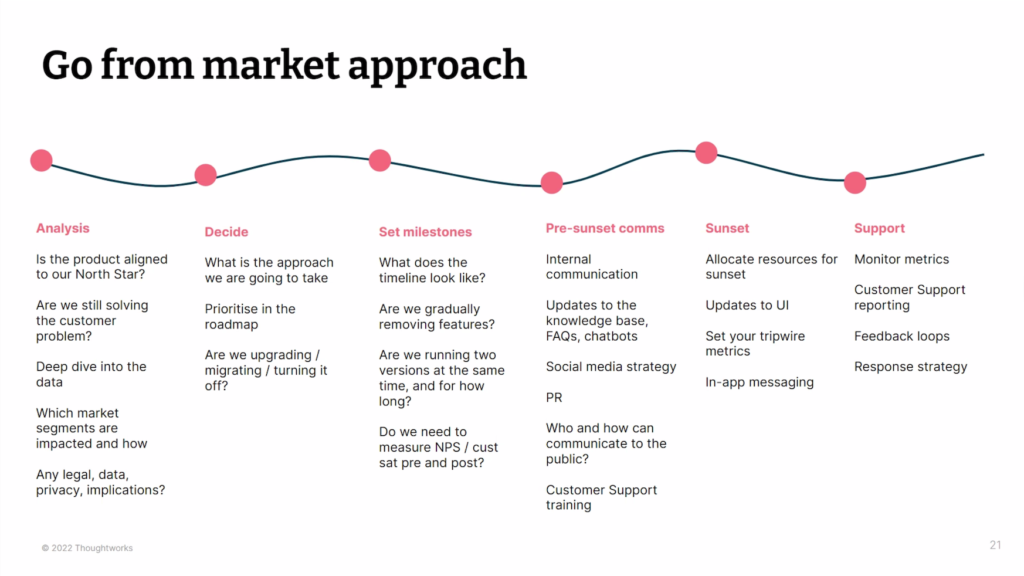Kate Lanyon came to speak to us about the relationship between product folk and engineers and some of the areas that can create friction between us. She’s got some great tips and insights as to how to reduce this friction and help create working relationships that kick ass! Kate’s been an engineer for a long time and draws on her experiences of being that individual contributor and performing some of these sins herself – through to being a CTO and co-founder where she’s also led engineers and had to coach them in some of these areas.
Her most recent experience at a startup digs deep on this topic because if engineering and product aren’t in sync in this environment, then you’re not going to be successful. Start up land is a fight for survival. If you haven’t worked in a startup, startup is like the most extreme form of product development that you can have. A startup must find value, before the money runs out, and raise more money than exponentially find more value to raise exponentially more money. Even if your team is not fighting for survival, hopefully some of these tips will make your life easier.
Lastly, an important disclaimer to every story or generalization shared in this talk, it doesn’t do justice to the uniqueness of every individual. So do take these examples as an opportunity to be curious and ask more questions of those you work with.
So what do engineers do?
Kate’s definition of what engineers do every day is that they apply deep knowledge to solve complex problems. It takes a lot of learning to be a great engineer, learning from each other, learning at conferences, and they learn different things, programming languages, techniques, they have to learn the system that they’re working on. There is a whole lot of learning and deep knowledge that goes into being an engineer.
The day job involves a lot of complex problems to solve. And even though an engineer may have done a thing before, a lot of web development is just forms and websites and things right? Yet, every system is different and every system is constantly changing. Even a thing done yesterday, trying to do that thing again today, it’s gonna be slightly different. Things move so quickly, the world around us changes really quickly, and engineers have to keep up with it. Working in code, there is never one single way to do things, there’s many ways to do things. And a task is broken up into many layers with many decisions. So engineers are constantly making decisions.
“It’s not as simple as just like, hey, build this thing.”
It’s not a straight path forward – sometimes an engineer will get stuck. Several constraints will come together in a way that it’s not easy to see a way forward. This is when an engineer will go play a video game, go for a walk, or leave for the day and go to sleep and wake up at 2am with a huge burst of creativity and a way to solve the problem. As Kate shares from her own experience this can happen regularly, where the moment of distraction is the moment you come up with the solution.
Her other insight is that there’s something Pavlovian about coding. It’s having a plan of how something should work, writing that down, and then running it and seeing it work, or not work. And doing that multiple times an hour, the joy at the code running, in the test passing or the frustration when it doesn’t. That’s micro level but it’s constant in an engineer’s day. And it’s just again and again and again. Perhaps that description makes it sound bad, but it isn’t, it’s not bad. It just is what it is. Yet that’s important to explain to product folk who sometimes don’t understand that internal world of an engineer and that lived experience.
To summarise, engineers are always learning and researching. They’re always understanding the landscape and the system that they’re working in, and the constraints that they have to work with. They’re constantly making decisions and evaluating what they’re doing and the way forward. They have large leaps of creativity at times. And a continual evaluation of success. These are really useful skills in other things as well. These are the things that engineers are training their brains to do every day.
How to engage your engineers
To quote Marty Cagan “if you’re just using your engineers to code, you’re only getting half their value”. Why does he say that? Because the engineers are closest to the technology, closest to the breakthroughs and what is just now possible, thus they’re a great source of innovation. Kate adds to this definition that the skills learned today through coding, when put towards solving customer problems, as opposed to focusing just on delivering what they’re asked, then engineers can be a great contributor to finding the fastest path to value.
So how does this work? Marty lays out several ingredients to having an empowered engineering team. You need a product vision that is intended to attract and inspire these engineers and you need a product strategy to ensure that engineers are working on the most important problems. You also need team objectives to give the engineers a clear statement of the problem to solve and the outcomes to strive for. None of this should be new to a PM (product manager) but it’s certainly reassuring to hear from Kate that these tools are truly useful for all members of the team.
In addition, the PM and the product designer on the team provide the engineers with critical constraints regarding the business viability and the customer experience. User research and data science provide the engineers with key insights to factor into the problem solving. Then as a team, you can find a really effective path to value. In terms of working in your own teams, take a look at these ingredients and see if you can understand why the engineers on your team joined the company that you work for, why your team exists, and how your team measures success, you can start to have really good conversations with your engineers at a higher level than just what can or can’t be done. Instead you’re discussing how we can solve the customer problem.

As an example (see image above) here is everything that we can make in the system, right now, things are coming in and out of this circle all the time. The engineering team, ideally, is aware of those. Then there are the things that solve the most important customer problem, this is where the product team can frame this for the engineers. Now we’re working with two constraints. Then there are the things that the engineers know the customer can actually use, the product designer gives us these constraints. In addition to these myriad of inputs are also budget, deadlines etc. Ideally, together, we find the jam of the thing that we should be doing next. And at this moment empower your team of problem solvers to solve customer problems. Like what could go wrong with this right? Nothing could go wrong!!
Technical perfection
Now we might get to technical perfection – this is something to be aware of. It’s hard to see. Because it can look like things taking longer than you expect. There can be other reasons for that. But it’s important to be aware of why engineers gold plate things, or over engineer them. We are incentivized by our industry to do this. This will happen when your engineering team is more excited about solving the problem in a technical way, they’re more excited about the solution, rather than solving the customer problem.
This is a natural consequence of just being told what to do. “Build this thing”. This shifts the problem to how to write the code. As Kate has said, she’s felt this too, and has gotten excited and made that into a challenge for herself. However, the engineering industry also wants engineers to do this.They’’re rewarded and recognized by their peers, and the industry, if they do stuff that’s hard and challenging and interesting and new. It demonstrates mastery, if they make something that’s technically perfect, even if it doesn’t solve the customer problem. In Kate’s words – I can write a blog post about a thing that’s completely irrelevant, but it’s cool, technically. I’m having a bunch of people telling me how awesome I am.
How good an engineer is, technically, is how career progression is assessed. If one was to write something really simple that solves a really big customer problem, will a manager be impressed by that? Sometimes if they’re a good manager, but a lot of the time No. And since engineers just love learning, the new and the technically difficult is something that they’re just naturally attracted to. Editor note: This insight into how a product person can actually “trigger” this behavior when potentially the attempt to keep things simple by sharing less information to avoid this situation was an Aha moment!
Feedback cycle
To quote Brian Cantryll – he’s a CTO & co-founder at oxidecomputer – “Above all else, engineers wish to make useful things”. All the engineers where Kate works love this guy. Brian cares about the customer. He wants to build useful things. Thus, an engineer’s highest priority is to satisfy the customer through early and continuous delivery of valuable software. This is the first of the twelve Agile principles, ironically enough, written by a group of engineers! Engineers are capable of caring about the customer problem, but they have to be included in that conversation.
At this point though it’s worth talking about why that conversation might not be happening. One of the things that can go wrong in those discussions is whether or not the feedback or questions are perceived as criticism or analysis. Engineers are direct at times. Those skills that were mentioned earlier that engineers develop, the dark side of that is that they have an overdeveloped sense of critical thinking. That is not something that can easily be turned off, that Pavlovian response means that engineers’ brains are trained to try and find issues early. That’s how they get to that little moment of joy.
That is then reinforced constantly on any working day. An engineer cannot turn off their critical thinking. They can’t not say something, if someone just presents them with a solution. In Kate’s experience, she’s going to immediately see three issues with it. It’s just whether she tells them, and she can’t not do it. It would be like walking around and trying not to read billboards or street signs, the human (engineer) brain just does it. The reason it does it is because of the length of experience doing this job. The call out here from Kate, is not that you should take crap from engineers. Instead, when an engineer comes to you and it seems like negativity, maybe just take a second look and assume good intent. Is it criticism or analysis?
Is it badly phrased? Could they use some feedback about how to better phrase things? It can be very easy to experience the directness of engineers and their ability to find issues and holes and things as a personal attack. It’s not generally meant that way. Some people are assholes but for the most part it’s not meant that way. Thus, when your engineers come to you with problems or questions, you should feel free to work through that. Try asking them questions and engaging in your own curiosity, answer their questions as they’re trying to understand better what’s needed here and try to help them understand what you need from them. However, do work with your engineering leadership to give feedback on how to collaborate better if this is a clunky type of discussion despite your best efforts to engage in discussion, because you’re doing everyone a favor if you also encourage feedback and coaching in this area.
Trade-offs

I want to talk about trade offs – don’t try to actually interpret the picture above – it’s from a textbook. It highlights the system attributes and how they all interact with each other. The reason to show this is because when engineers say no, or they ask questions, this is what is in their head, but exponentially larger. Thus it’s up to you, the product manager, to figure out how deep you want to go into this. What questions do you ask now? Your engineering colleagues will be happy to explain it to you, if you’re willing to listen. It might not be that easy for them to express this in words (Editor note: a replay of some fascinating team chats where I’m sure we were talking cross purposes, because I, the PM, wasn’t actually being curious. And the person across from me was likely struggling to figure out how to explain this massive image in their mind to me!!). Generally, the criticism comes from trying to unpack all of this. There are limitations of the system, the conventions of the system, like the engineering principles of the company. Even something as simple as will this get past code review? Can this be done within the deadline? There’s a whole lot of calculations that are being done, that they’re not easy to articulate because of all of what’s oversimplified in the above image. As Kate begs, please do ask and be patient in the conversation to get to an answer.
Nonetheless there is something to be said for trusting your engineers to work through this thinking for you and leave them to weigh up all the constraints and come back to you with a good solution.
To circle back to the feedback part – suggested reading of the resource Radical Candor – to help with giving feedback. A couple of reflections from Kate, who found it a super useful resource to improve in this area, engineers are generally fine with challenging directly. We all (engineers and product alike) need to spend some more time caring personally to ensure that feedback is well received and given with the best intent! Because the main message from this book is that if you do provide feedback from a place of caring you can say almost anything. If you can establish a relationship with your engineers, where you’ve established that you care personally then you can give feedback. And in return, you as the PM can be open and receptive to feedback as well. Then the relationships and the team can be more productive. But it’s work. It’s definitely work that needs doing.
Flow
The best thing about being an engineer, in Kate’s opinion, is flow. Flow is a mental state, where it’s extreme comfort, extreme concentration, but it’s effortless. And everything falls away when you’re in it. It’s been studied in artists and athletes, But engineers can reach it too. It’s described as the secret to happiness. To get to this, there’s several ingredients, and you, product people, can help your engineers with those, and help them get to this moment, if you recognise their need for this and respect it. That’s how you can make a connection with your colleagues.
The different ingredients include whether or not an engineer has the ability to completely concentrate on a task. Are they in an environment where they have a block of time that they can get into work knowing they’re not going to be interrupted? Do they know what they’re actually trying to do? Do they have a clarity of goals in mind? Then if we go further, is the task an appropriate skill level for them? If it’s too easy, or too hard, they won’t be able to get into this state. They need to feel ownership over the task as well. You can find more in this Ted talk by Mihaly Csikszentmihalyi. This is definitely a way to connect with your engineers, if you can respect their flow time.
Another area to think about is how to help your engineering colleagues get their technical debt under control. Following on from float, technical debt makes it harder to get into flow. Because the system is muddy and terrible to work with. Technical debt as a term is kind of falling out of favor at the moment, to be replaced with other things like code health or things like that.
Kate’s preference is still the term technical debt, because from the perspective of “debt” the metaphor falls down. Technical debt seems like a loan to be repaid, and no one ever repays it. However, if you think of technical debt as a loan with interest, then it works. Technical debt is any code that’s more expensive than it should be, code one has to pay interest on. That interest is getting paid when you get delays from bugs or in not enabling your engineering team to reach flow and be productive. The way to handle technical debt is to spend time paying it down knowing you’ll never pay it off completely.
If not, that leads us to talk about rewrites. Rewrites are a bad place to be!! You do not want to be doing a rewrite. If you’re doing a rewrite your customers are not going to get any value during that time. These projects always take longer than you think. There are companies that have been really damaged by doing a rewrite, while their competitors have been able to keep going. And in some of those cases they’ve lost everything in that gap of time while the competition moves on.
Going back to that technical friction, rewrites are very attractive. It’s a new puzzle. It means an engineer is free from all the bad decisions that were made in the past, when one didn’t know any better. It’s a great way to learn, it’s going to look super impressive on a resume. However, you can avoid getting tempted by managing the tech debt. Thus tech debt needs to be a regular investment of time to pay down the growing interest. Marty Cagan says that product managers should just take 20 to 30% of their time off their roadmap/planning to manage tech debt, in conjunction with an engineering team always having a prioritized list of things they want to do with that time. Through regular maintenance, you can avoid the need for rewrites. You cannot necessarily avoid people asking for one – it’s always going to look intriguing. You, the product team, should be investing in not getting to the point where it’s needed, because having to halt all delivery of customer value is not going to look good for you as a product team!
Summary
What are the things to keep an eye out for as product folk to work so well with your engineers that you kick ass together?
- Use your team of problem solvers to solve customer problems. Engineers need discovery and research time, asking them for stuff on the spot is going to result in them saying whatever comes into their mind at the time. If they have research time, then they can actually go away and prove it and improve their answer. Constraints are good so share them all as you’ll get a better solution.
- Help engineers find flow. They produce their best work this way.
- Have a discussion about technical debt, assigning time to regularly pay it down. Make sure it’s prioritised. Engineers shouldn’t just fix whatever shiny thing is in front of them, they should have a list of the most important things to fix. Avoid needing a complete rewrite!
- A really good starting point in finding common ground between Product and Engineering is one of the twelve Agile principles (these were written by engineers after all) – “satisfy the customer”.
You can find other the slides, other good resources and books on Kate’s site.
Thanks again to Kate for all the fabulous insights and thoughtful suggestions for creating great working relationships with your engineering team! Thanks to Kogan for being our wonderful host.
Our speaker:
Kate Lanyon, Engineering Manager at Fastmail, co-founder & former CTO of Eugene Labs will shared insights into the above. Kate has a led a varied career – going from full stack development, to mobile app development and back again before moving into senior leadership. She has worked with teams across many different domains including agencies, start ups and corporates. You can fund musings at her website.
Our host:
Kogan.com is a pioneer of Australian eCommerce. We are a dynamic and rapidly growing business. Our team believes in using & building technology to improve the online shopping experience for our customers. We are pragmatic, intelligent, fast paced and driven by seeing our software shipped to production daily. The software we build – including www.kogan.com – is used by millions of customers. Check out our pride and joy https://devblog.kogan.com/ to learn more about us and how we deliver amazing products and software!

